Impulse
Impulse and the vertical jump
In the explanation of Newton's second law the relationship between force and acceleration (F=ma) was shown to be a fundamental one. It was seen that for an object of constant mass that F=ma could be written as:
![]()
F = Force
m = mass
vf = final velocity
vi = initial velocity
t = time
This formula can be re-written to give:
![]()
This is sometimes known as the Impulse - Momentum equation. The term on the left, Ft ,being defined as the IMPULSE of the force, and the term on the right as the change in momentum experienced by the object as a result of the Impulse. A further rearrangement of the formula (again assuming the mass to be constant) gives:
![]()
This formula now indicates that the Impulse divided by the mass is equal to the change in velocity experienced by the object. Note that as time approaches a very small value, force may be considered to be an instantaneous value.
The graph of the vertical ground reaction force for a vertical jump that was introduced in the section of the project focusing on free body diagrams and is now reconsidered.
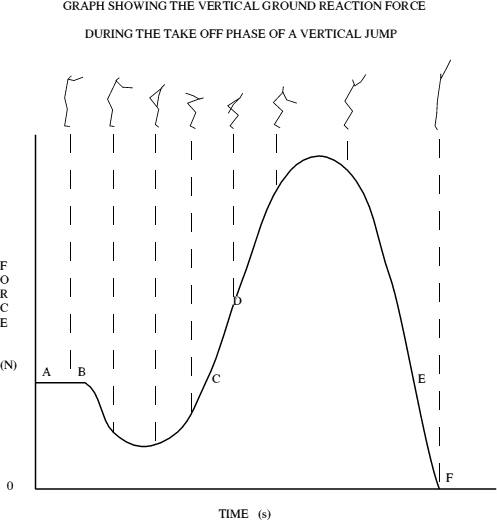
It may be noted that the vertical axis represents force and the horizontal axis time. Therefore, on the graph, force ´ time is represented by the area under the curve. This is shown below:
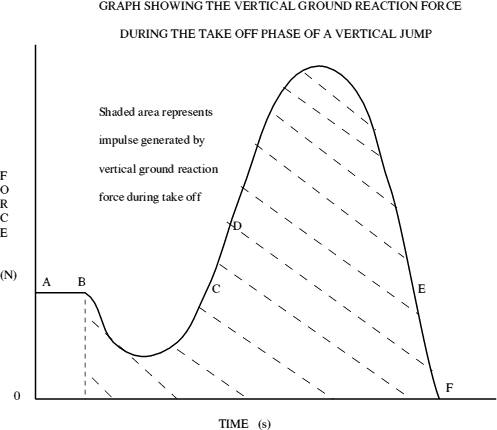
It must be noted that the jumper will also be experiencing the force of gravity and this will also be acting as an impulse but in a downwards direction. Therefore, to explain the jump in terms of the Impulse-Momentum relationship, an appreciation of the net force acting on the jumper is needed. The following diagram shows the impulse acting on the jumper when the ground reaction force is combined with the gravitational force.
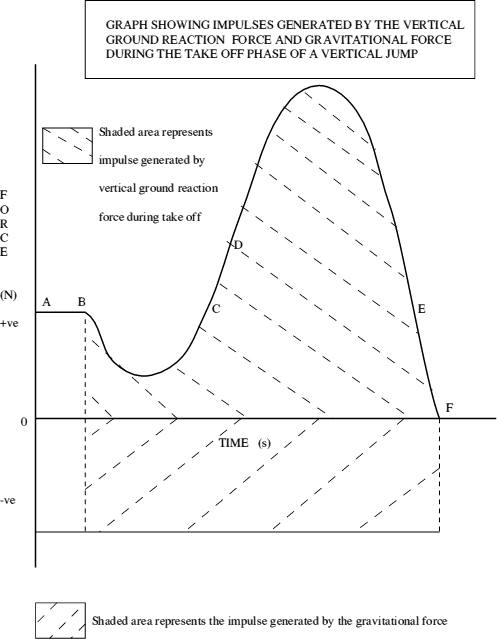
It is the combined effect of the gravitational force, and the vertical ground reaction, that causes the net change in the jumper's momentum. Remembering that the gravitational impulse is effectively negative and must be deducted from the positive impulse generated by the ground reaction fore, the net impulse is represented by the areas of the graph shown below.
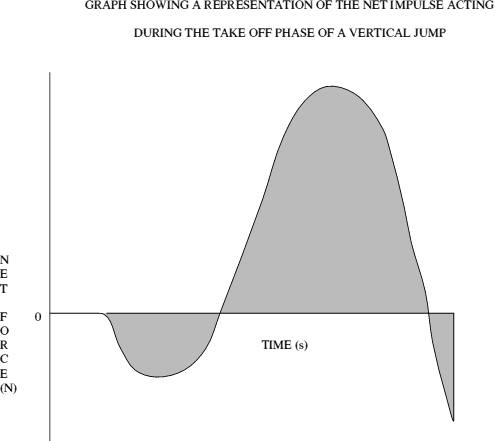 .
.
The sum of the positive and negative areas in this diagram gives the net impulse in units of newton seconds (N×s).
The formula identified earlier, and shown below, can now be used to examine the jumper's velocity:
![]()
If the net impulse value is divided by the jumper's mass the change in vertical velocity of a jumper is obtained. Because the jumper started with zero velocity then the change in this case gives the actual take off velocity of a jumper.
If the above process was applied at a series of small time intervals from the start of the jump then instead of only having the change in velocity at the take off point, a picture of the changes in velocity could be built up over the whole period of time of the take off. A vertical velocity versus time graph could be then be plotted and would look like that shown below.
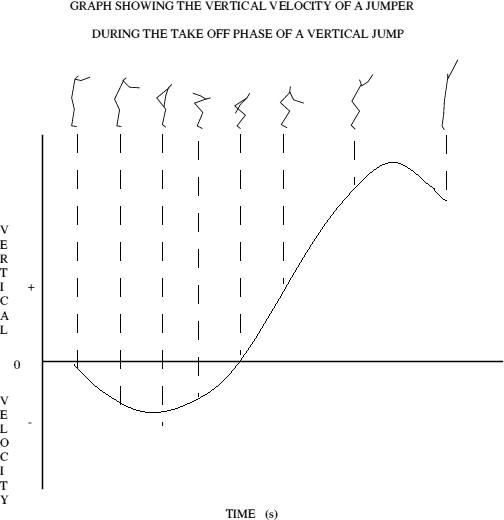
TASK: Using the information on this page and the video clip, write a 300 word explanation of how vertical velocity changes during the the take off phase of the jump up to the point of take off. In your explanation you should refer to the key points in the movement where velocity is at a maximum in an upward direction, maximum in a downward direction, where it is zero and also comment on why maximum velocity does not occur at the point of take off.
TASK: Sketch a graph of the vertical force trace for the take off phase of the jump (or print out a copy of this page) Superimpose the vertical velocity trace on top of the force trace. Ensure that the temporal sequencing of the two traces are accurately represented.